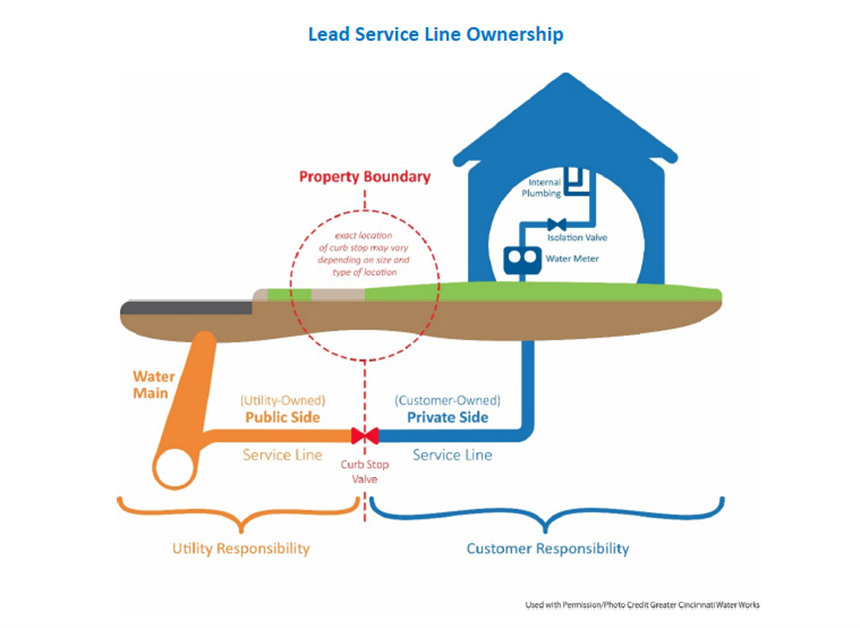Inventory Today for Safer Water Tomorrow
At NWWA, our top priority is delivering safe drinking water every day. The water leaving our Forest Park Water Treatment Facility is always free of lead. However, lead can contaminate drinking water as it travels through lead-containing plumbing components, including water service lines (the pipes connecting homes to water mains), household fixtures and interior plumbing. These components are often owned by property owners and can introduce lead into the water supply.
In line with the latest regulations, NWWA is fully committed to ensuring your water remains safe. As required by Federal and State guidelines, we actively identify, track, and notify residents about any potential risks from these lines, and provide regular water quality updates to keep you informed.
Reducing exposure to lead is a shared responsibility. Public water systems and homeowners must work together to ensure the water in your home remains safe.

Have more questions on Lead exposure and your water? Visit https://www.nwwater.com/get-the-lead-out/
Check out our Service Line Inventory Hub: https://lead-service-line-inventory-1-nwwa.hub.arcgis.com
Locate Your Water Service Line
Your water service line brings water into your home from our water main in the street. Service lines typically enter the home in the basement or crawl space. This is typically near where your water meter is. installed. Click here to download detailed instructions for finding your water service line



Once you’ve located your water service line, you may use one of our Lead Check test kits to see if it’s made of lead. Click here to download instructions for conducting the test.
Lead Pipes: Typically, dull gray in color, lead pipes can pose serious health risks as lead can leach into drinking water. These pipes were commonly used in older homes.
Galvanized Pipes: These silver pipes, often seen with some rust or corrosion, were popular in homes built before the 1960s. Over time, they can corrode and lead to water flow problems or contamination.
Copper Pipes: Recognized for their bright copper color, these are the modern standard for plumbing. Copper is durable, corrosion-resistant, and does not pose the same health risks as lead.
PVC Pipe: Plastic pipes come in a variety of materials and colors, and they do not emit a metallic ringing sound when tapped. A plastic service line typically signifies a recent installation, which means it is free from lead solder.
How to Test Your Service Line Material
What You’ll Need:
A metal object (like a coin or flat head screwdriver)
A magnet
Scratch Test – Gently scratch the surface of the pipe with a screwdriver or coin.
Magnet Test – Hold a magnet against the pipe.
Tap Test – Gently tap the pipe with a metal object.
| Material | Scratch Test | Magnet Test | Tap Test |
| Lead | shiny and silver | magnet will not stick | dull noise |
| Galvanized | dull gray | magnet sticks | metallic ringing noise |
| Copper | copper in color, like a penny | magnet will not stick | metallic ringing noise |
Remember, if you’re unsure about the results or concerned about lead, it’s best to contact one of our Water Quality Specialists for accurate identification and advice. Use our contact form – https://www.nwwater.com/lead-copper-information/
Service Line Replacement Program
The surest way to protect against lead in water is to get the lead out altogether. That means replacing lead service lines and replacing other plumbing that contains lead or galvanized pipes. To ensure the long-term safety of your drinking water, we are proud to introduce our Lead Service Line Replacement Program.
This program is designed to help homeowners identify and replace lead service lines that connect homes to the water main, reducing the risk of lead entering your water supply. By taking action now, you can help protect your family’s health and contribute to a safer community.

Explore the program details, eligibility, and how we’re working to make the replacement process as seamless and cost-effective as possible for you. Click Here for Details!